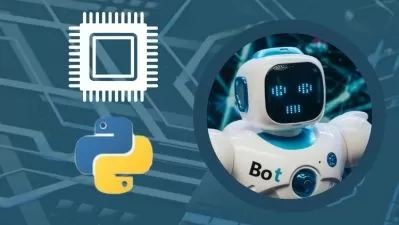Deep Learning Using Keras - A Complete and Compact Guide for Beginners
Abhilash Nelson
9:33:38
Description
The artificial intelligence domain is divided broadly into deep learning and machine learning. In fact, deep learning is machine learning itself but deep learning with its deep neural networks and algorithms tries to learn high-level features from data without human intervention. That makes deep learning the base of all future self-intelligent systems.
This course begins with going over the basics of Python and then quickly moves on to important libraries of Python that are critical to data analysis and visualizations, such as NumPy, Pandas, and Matplotlib. After the basics, we will then install the deep learning libraries—Theano and TensorFlow—and the API for dealing with these called Keras.
Then, before we jump into deep learning, we will have an elaborate theory session about the basic structure of artificial neuron and neural networks, and about activation functions, loss functions, and optimizers.
Furthermore, we will create deep learning multi-layer neural network models for a text-based dataset and then convolutional neural networks for an image-based dataset.
You will also learn how the basic CNN layers such as the convolution layer, the pooling layer, and the fully connected layer work. Then, we will use different techniques to improve the quality of a model and perform optimization using image augmentation.
By the end of this course, you will have a complete understanding of deep learning and will be able to implement these skills in your own projects.
The complete code bundle for this course is available at https://github.com/PacktPublishing/Deep-Learning-using-Keras---A-Complete-and-Compact-Guide-for-Beginners
More details
User Reviews
Rating
Abhilash Nelson
Instructor's Courses
PacktPub
View courses PacktPub- language english
- Training sessions 80
- duration 9:33:38
- Release Date 2023/02/14











